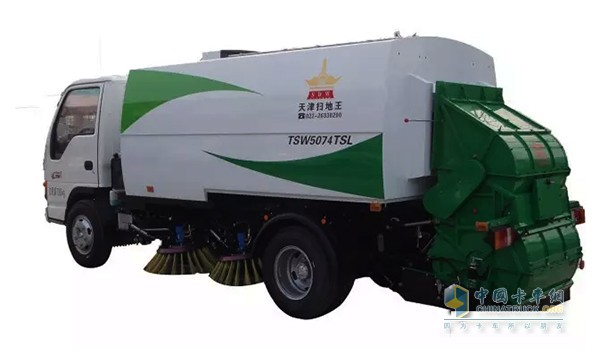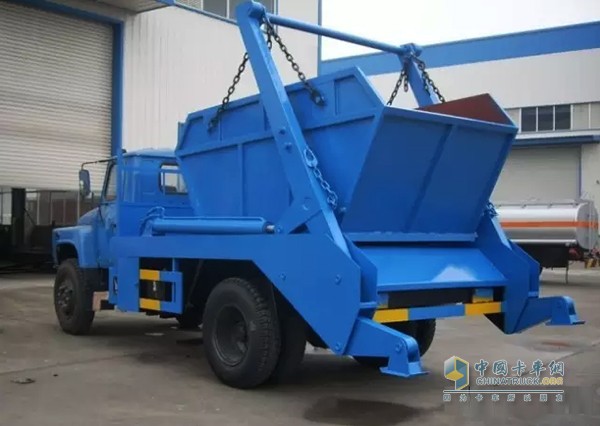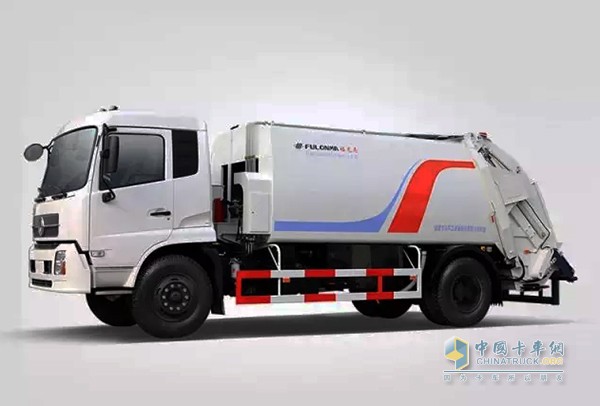By learning foreign advanced design concepts and absorbing advanced foreign technologies, the gap between the technology and the tops of the special sanitation vehicles is getting smaller and smaller. Below, Xiao Bian will focus on introducing the development of road sweepers and garbage transfer vehicles in China. Road sweeper In the 1960s, our country developed and produced the first generation of road sweeper vehicles. Due to poor cleaning results, labor intensity, and inconvenient operation, they were eliminated shortly after their launch. In the 1970s, related research institutions and manufacturers in China increased the research and development of the sweeper and the second-generation sweeper was born in China. Beijing and Shanghai have developed large-, medium-, and small-size pure sweep sweepers, namely S31 large sweeper, S32 medium sweeper and S15 small sweeper, which have been put into use one after another. The dry pure absorption sweeper developed by Tianjin was put into use in small quantities. The technical level of the second generation of sweepers has been greatly improved over the first generation. However, due to the low sweeping efficiency (cleaning degree) and the reliability of the dry pure suction dust removal system, the use of this sweeping machine is greatly limited. In the mid-1980s, China's third-generation road sweeper, the wet suction sweeper, combined with the SHZ20 sweeper, uses a combination of sweeper sweeping and vacuum pneumatic conveying to sweep efficiency from a pure sweep sweeper. 80% of the machine is increased to about 95% of the suction sweep type, and the principle and method of wet dust removal are adopted to solve the secondary dust pollution of the sweeper during cleaning and the separation of dust and air from the dustbin. From 1993 to 1994, a large number of economically developed areas began to purchase large numbers of sweepers. In a few short years, the road sweepers have completed the transformation from a single species to multiple species, forming a pattern of self-development and the introduction of foreign technologies. In 2010, there were about 30 companies producing road sweepers in China. From the point of view of production, sales volume and technical strength, Zoomlion Zhongbiao Business Unit, Tianjin Sweeping King Special Vehicle Co., Ltd., Yangzhou Shengda Special Vehicle Co., Ltd. and Beijing Ai Qingqing Sweeper Manufacturing Co., Ltd. are in the leading position in the industry. Garbage collection and transfer vehicles According to statistics, in 2007 China's urban domestic garbage reached 150 million tons and will increase at an annual rate of 8%-10%. At present, there are more than 80,000 urban garbage transfer vehicles in China that carry the task of transporting urban garbage in China. The current major waste transfer technologies (models) can be divided into the following types: Open garbage transfer: It is a garbage transfer technology in the early period of urbanization. Urban household waste is mainly dumped directly into a designated garbage collection point through a rickshaw or a small motor vehicle, and then transported by another vehicle to a place where rubbish or waste is disposed. In the process of garbage transfer, the transshipment site is open or semi-enclosed, or a simple house, and sometimes even temporarily selected. In this case, the main vehicles that are matched with it are usually open tractors, agricultural vehicles, etc. This mode of transport is open during the transfer and transportation of garbage. Although the transfer of garbage is realized, it also causes secondary pollution of the environment. Closed garbage transfer. For many shortcomings of open transport, closed transfer mode came into being. The closed mode of garbage transfer is mainly the closure of waste transfer sites, and the closure of waste loading containers on transfer vehicles. Working in closed transshipment sites reduces the pollution to the surrounding environment; closed container transfer reduces the scattering of rubbish, dust flying, and secondary pollution of the environment. However, at the same time, due to the small concentration of municipal solid waste, the large amount of mixed garbage collection, the low efficiency of the transfer of garbage vehicles, and the high transportation cost. Mechanical packing / compression waste transfer (referred to as compressed transport). The large-scale application of this type of transshipment model in the country appeared in the 1990s. With the changes in the waste composition and the development of transfer technology, the integrated technology of mechanical filling/compression transport and compression transport began to be applied and rapidly spread. Compared with the first two types of transshipment technologies, the compression transport technology successfully solves the problem of the integration of compression operations and transport capacity, as well as the loss of carrying capacity of transportation vehicles on the premise of effective prevention and control of secondary pollution. It also improves the efficiency of waste transfer and reflects waste. The economy and environmental protection of transshipment.
1. Material: Pavement sign boards are typically made of durable materials such as aluminum, steel, or plastic. Pavement Sign Board,Pavement Board Signs,Pavement Advertising Boards,Swinger Pavement Signs SUZHOU JH DISPLAY&EXHIBITION EQUIPMENT CO.,LTD , https://www.jh-posterstand.com Tianjin sweeping King sweeper car
Tianjin sweeping King sweeper car  Open refuse transfer
Open refuse transfer  Fujian Longma Compression Garbage Truck
Fujian Longma Compression Garbage Truck
2. Size: The size of pavement sign boards can vary depending on their intended use. They typically range from 18 inches to 36 inches in width and 24 inches to 48 inches in height.
3. Weight: The weight of pavement sign boards can vary based on the material used. Aluminum sign boards are lightweight, while steel and plastic sign boards can be heavier.
4. Shape: Pavement sign boards are typically rectangular in shape, but can also be square or circular.
5. Graphics: Pavement sign boards can be printed with graphics or text on one or both sides. Graphics can be printed using a variety of methods, including vinyl graphics, digital printing, or screen printing.
6. Frame: Pavement sign boards may have a frame that holds the sign in place and provides stability. Frames can be made of the same material as the sign board or can be a different material.
7. Base: The base of pavement sign boards can be weighted to provide stability in windy conditions. Some pavement sign boards have a water-filled base, while others have a sand-filled base.
8. Weather resistance: Pavement sign boards are designed to withstand outdoor weather conditions, such as rain, wind, and sunlight. Some sign boards are treated with UV-resistant coatings to prevent fading.
9. Portability: Many pavement sign boards are designed to be portable, with wheels or a handle for easy transport. This makes them ideal for businesses that need to move their signage around frequently.
The development of China's sweeper trucks and garbage transfer vehicles
China's environmental sanitation vehicles have attracted a lot of foreign advanced technologies, such as the introduction of Japan's Foxconn Heavy Industry Technology, the United States Canton Technology's detachable garbage trucks, and the introduction of the United States Xiabo cooperation and production of the pull-arm vehicles.